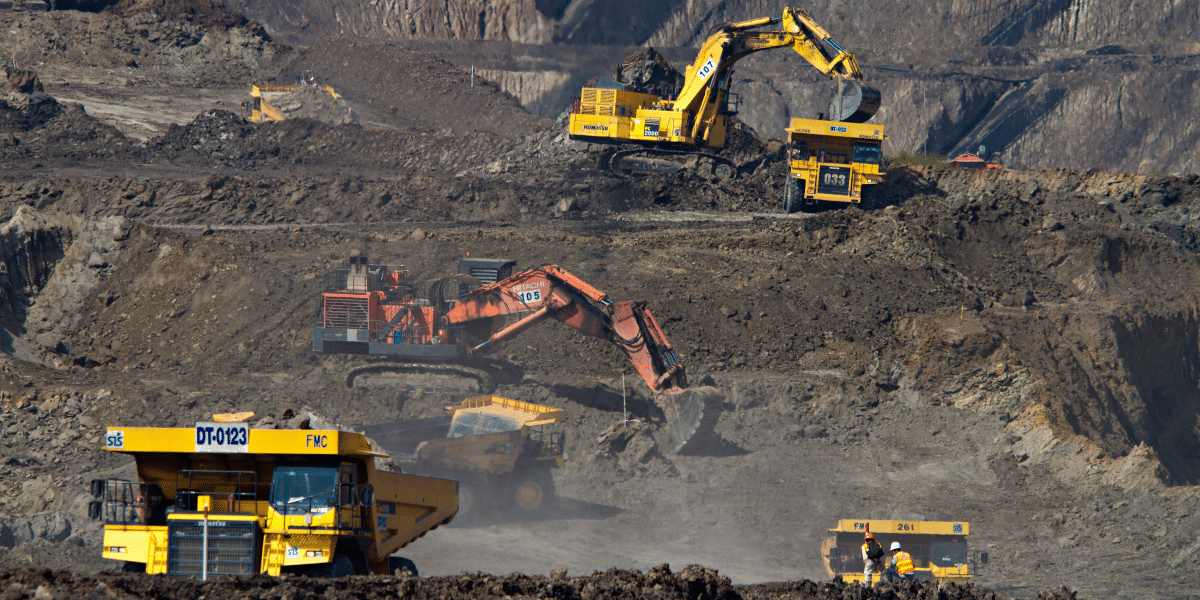By: Joshua Finley
Mining operations face significant risks to mine health and safety due to hazardous conditions and heavy machinery. Integrating advanced technologies is crucial for mitigating these risks, protecting workers, and ensuring compliance with health and safety standards. The Mine Safety and Health Administration (MSHA) sets vital guidelines for the industry, but the implementation of innovative tools can further enhance these efforts. Advanced technologies enable mining companies to reduce accidents, safeguard workers, and fulfill regulatory obligations more effectively.
The Current State of Mine Safety and Challenges
Mining remains one of the hazardous industries, presenting unique challenges:
- Air Quality Monitoring: Mines are prone to dangerous levels of dust, methane, and other airborne contaminants. Traditional methods often fail to provide timely alerts, increasing the risk of respiratory issues and explosions.
- Heavy Machinery and Equipment Fatigue: Continuous operation of heavy machinery increases the risk of mechanical failure, leading to accidents. Manual inspections are time-consuming and may miss critical signs of wear.
- Worker Health in Extreme Conditions: Miners frequently work in confined spaces, deep underground, and in extreme temperatures, raising the risk of health issues like heat stress and fatigue. Conventional safety measures struggle to address these challenges effectively.
Traditional safety protocols often lead to gaps in compliance and higher accident rates. The need for advanced, proactive safety measures is clear.
Technology’s Impact on Mine Safety Compliance
Real-Time Environmental Monitoring
Advanced sensor technology offers continuous monitoring of air quality, temperature, and gas levels in mines. These sensors provide immediate alerts when conditions become unsafe, allowing for quick corrective action. For instance, sensors detecting methane or other dangerous gasses can trigger automated ventilation systems to prevent explosions. This real-time monitoring meets regulatory requirements and significantly reduces accident risks.
Automation and Robotics
Automation plays a critical role in reducing human exposure to hazardous tasks. Autonomous drilling machines can operate in unstable environments, minimizing the need for human intervention. Robots equipped with cameras and sensors are used for remote inspections of tunnels and equipment, identifying issues without putting workers at risk. These innovations not only improve safety but also enhance operational efficiency, ensuring compliance with safety standards while maintaining productivity.
Wearable Technology for Health Monitoring
Wearable devices are increasingly used in mining to monitor workers’ health and safety in real-time. Smart helmets and vests equipped with biometric sensors track vital signs, such as heart rate and body temperature, alerting workers and supervisors to signs of fatigue or heat stress. These wearables also monitor exposure to hazardous materials, providing data that can prevent long-term health issues. By addressing health risks before they escalate, wearables ensure continuous compliance with safety regulations.
Real-World Applications of Technology in Mining
Several mining companies have successfully implemented these technologies:
- Rio Tinto’s Automated Mining Operations: Rio Tinto uses autonomous trucks and drills in its Australian mines, reducing human exposure to dangerous conditions and increasing efficiency. These technologies have significantly reduced accident rates and set a new standard for mine safety.
- Anglo American’s Smart Helmet Initiative: Anglo American has introduced smart helmets that monitor worker fatigue and exposure to harmful gasses. These helmets have played a crucial role in preventing accidents related to exhaustion and toxic gas exposure.
- Barrick Gold’s Use of Drones: Barrick Gold employs drones for equipment inspections and environmental monitoring, reducing the need for workers to enter hazardous areas. This minimizes injury risks and ensures compliance with safety standards.
These examples demonstrate how technology can revolutionize mine safety, providing enhanced protection for workers and improved regulatory compliance.
The Future of Mine Safety Compliance: Emerging Technologies
Emerging technologies will further transform mine safety by introducing predictive and preventive measures:
AI-Driven Predictive Maintenance
AI-driven predictive maintenance is a game-changer for mine safety. By analyzing data from sensors on machinery, AI identifies patterns that signal potential issues before they escalate. For example, it can detect abnormal vibrations, overheating, or wear in critical components, allowing for timely maintenance. This proactive approach not only prevents sudden equipment failures but also extends the lifespan of machinery, reduces downtime, and lowers maintenance costs. In mines, where equipment failure can lead to catastrophic accidents, this technology significantly enhances safety and operational efficiency.
Advanced Robotics for Hazardous Tasks
Future robotics will automate increasingly complex and dangerous tasks, further reducing the need for human involvement. Key advancements include:
- Autonomous Navigation: Robots will safely traverse unstable tunnels and confined spaces.
- Detailed Inspections: Advanced sensors and AI enable precise inspections without human presence.
- Hazardous Material Handling: Robots will manage toxic or explosive materials, minimizing risks.
- Critical Task Automation: Tasks like drilling and explosive placement will be handled with greater accuracy, reducing human error.
These innovations will significantly enhance safety and operational efficiency in mining operations.
Integrated Safety Management Platforms
Cloud-based platforms that integrate data from wearables, environmental sensors, and machinery will enable comprehensive safety management. These platforms provide real-time insights and more effective decision-making, ensuring safety measures remain up to date.
As these technologies evolve, OSHA and other regulatory bodies may update their standards to include guidelines for their use. The shift from reactive to proactive safety management will redefine how mining companies approach compliance.
Key Considerations for Implementing Technology in Mining Safety
Successfully integrating these technologies requires an in-depth and carefully thought-out approach:
Assess Current Safety Programs
To effectively integrate technology into mine safety, companies should follow these steps:
1. Conduct a Comprehensive Safety Audit: Review all existing safety protocols, equipment, and procedures to identify strengths and weaknesses.
2. Identify High-Risk Areas: Pinpoint operations or locations where accidents frequently occur or where existing measures are insufficient.
3. Evaluate Existing Technology: Assess current technology used in safety management to determine where upgrades or new tools are needed.
4. Gather Input from Workers: Collect feedback from employees on safety concerns and the effectiveness of current measures. Their insights can reveal overlooked issues.
5. Analyze Incident Data: Review past accident reports and near-miss incidents to identify patterns and areas where technology could prevent future occurrences.
6. Research Technological Solutions: Investigate the latest advancements in safety technology that address the specific risks identified in the audit.
7. Prioritize High-Impact Investments: Focus on implementing technologies that offer the significant safety improvements and align with the company’s operational goals.
8. Develop a Technology Integration Plan: Create a detailed roadmap for implementing new technologies, including timelines, budgets, and training requirements.
Start with Pilot Programs
Pilot programs allow companies to test new technologies in controlled environments before full-scale implementation. This approach refines the process and ensures the technology meets safety and operational needs.
Invest in Training and Adoption
Comprehensive training programs are essential to maximize the benefits of new technologies and minimize resistance from workers.
Conduct a Cost-Benefit Analysis
While the initial investment in technology may be high, the long-term benefits often outweigh the costs. A detailed cost-benefit analysis can justify the expenditure by highlighting reductions in accidents, downtime, and regulatory fines.
Integrating technology into mining operations results in safer working conditions and enhanced compliance with health and safety standards.
The Path Forward for Technology-Driven Mine Safety
Relying solely on traditional safety methods often leaves gaps in protecting workers from the inherent dangers of mining. Technology provides a superior alternative by delivering actionable insights that manual processes cannot match. AI-driven maintenance can predict failures before they happen and prevent costly and dangerous breakdowns. Automation can remove workers from high-risk tasks and directly reduce injury rates. Wearables can monitor health in real-time and identify hazards like toxic gas exposure. If the mining industry can overcome its historically cautious approach to adopting new technology it can not only enhance operational efficiencies but also protect workers’ lives and health in ways that traditional methods never could.
Published by: Martin De Juan

















